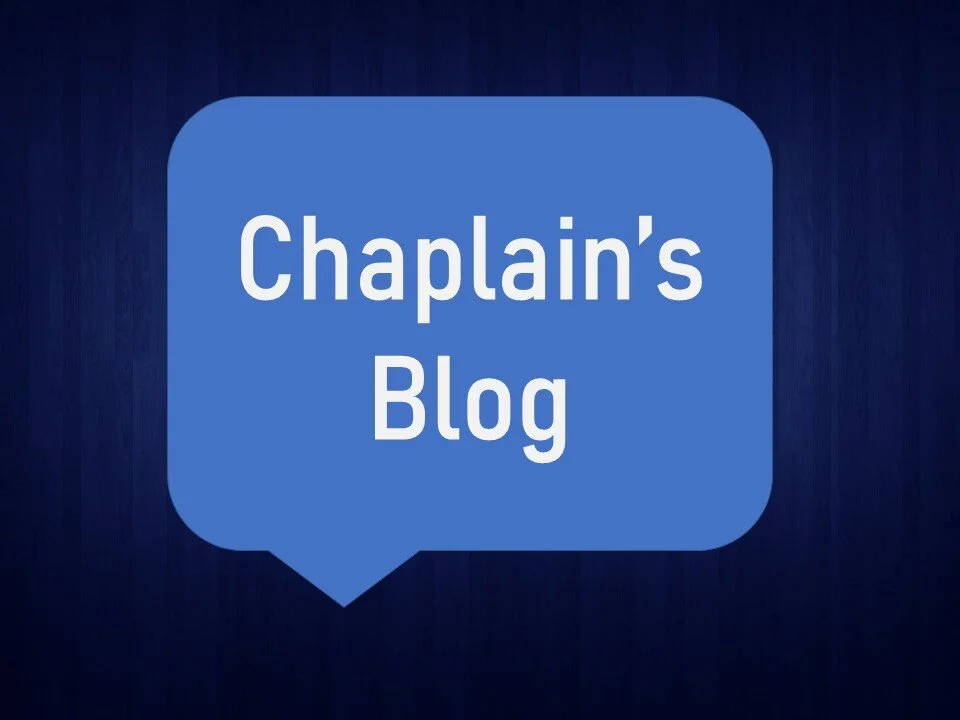So You Want to be a Chaplain? Part 2
In my last post, I examined the role of pastor when providing pastoral care. The chaplain role is quite different from the role of pastor and as a result, some pastors struggle to make the transition to chaplain. I learned quickly that while my pastoral care training and experience was helpful to a degree, it was also inadequate in preparing me to be a chaplain.
Chaplains almost always begin their interaction with a person as a stranger. To use business language, it’s a “cold call.” In healthcare chaplaincy, the chaplain is frequently walking into a crisis. Someone has died or is dying. Someone has just received a terrible diagnosis. Chaplains walk into situations of high emotional and spiritual distress as an unknown outsider. Hospital chaplains often see people on the worst day of their life.
The chaplain seeks to establish trust and build a foundational relationship. Using skills one learns in chaplain training, a good chaplain can establish rapport with most people in a short period of time. Chaplains often walk into complicated family dynamics, including active family conflict. A good chaplain can identify and navigate family dynamics effectively while keeping the family focused on what is best for the patient.
Chaplains specialize in meeting people where they are – theologically, emotionally, and socioeconomically. As a hospital chaplain, I see patients from other faiths, atheists, and the entire spectrum of Christian denominations. A chaplain often has numerous cultural, religious, and socioeconomic differences from those they visit. Recognizing these differences, effective chaplains remain non-judgmental and maintain unconditional positive regard for the people they see.
Part of being an effective chaplain is being able to enter into another person’s belief system to provide care while retaining one’s own religious identity. The role of a chaplain is not to convert them, correct them, teach them, or save them. This does not mean chaplains avoid religion and questions of faith. A serious medical crisis often triggers a spiritual crisis. Chaplains regularly engage patients in deep, spiritual conversations and help them explore the source of their spiritual pain.
Chaplains focus on the ministry of presence. Chaplains are usually responding to a crisis of some kind and have no ability to “fix” anything. New chaplains often get caught up trying to “do something” rather than focusing on being fully present in the moment. In fact, good chaplaincy often involves resisting the urge to try to fix. Part of the chaplain’s role is to be a supportive presence and ensure the person and family are not facing the crisis alone. Being present IS doing something.
Meeting people in emotional crisis can be challenging. Significant emotional or spiritual pain may be present. Effective chaplains are good at maintaining a compassionate, non-anxious presence even when everyone around them is highly anxious or agitated. Chaplains learn how to ‘stay with the pain’ and often this can be a healing step for the person. New chaplains often tend to avoid the pain and attempt to redirect the person to something more pleasant to think about. Rather than avoiding the painful topic, chaplains learn how to guide people in talking through the pain – which can ultimately lead to more peace and healing.
I recall one chaplain encounter with a highly distressed patient who had a terminal diagnosis, but death was not imminent. Everyone assumed this patient was in distress because he was facing death. By staying with his pain through active listening and other chaplain skills, I determined that his distress was not over death, but rather who would care for his wife after the patient died. The patient felt crushing guilt because he didn’t have his affairs in order and also overwhelming anxiety about his wife’s future well-being. I alerted a social worker about the source of the patient’s distress and she was able to arrange for legal assistance to help the patient document his wishes. When the last paper was signed, the patient wept and his distress melted away. This positive result was made possible by staying with the patient’s pain.
Healthcare chaplains move from one crisis to the next, perhaps engaging a dozen families in crisis in a day. While there are exceptions, many chaplain visits are 20 minutes or less. Unlike pastors, sometimes one visit is all a chaplain gets. And yet, a lot can happen in 20-30 minutes and these visits can be extremely meaningful for patients and their families. I recall one visit with an adult daughter sitting with her dying father. Using chaplain skills I learned in training, I was able to stay with her pain. She expressed her anger toward her father for his verbal abuse over the years. She expressed guilt over mistakes she’d made in her relationship with her father. Then in a breakthrough moment, she recognized she was treating her child the same way her father had treated her. (In clinical terms, we call this multi-generational transference.) The daughter began crying and resolved to change. All of this occurred in one 25-minute visit.
In summary, chaplains provide short-term supportive care for those in emotional and spiritual distress in the role of a spiritual outsider. (Note: some chaplain settings do allow for longer-term care.) When visits go well, chaplains build trust quickly and help people navigate their crisis emotionally and spiritually.

